Every year, the first cold days play havoc with TPMS (tire pressure monitoring systems). If your dashboard TPMS light has ever lit up on a colder-than-normal day, chances are there may be nothing wrong with your tires or wheels. It could be that the air pressure in your tires has been affected by the cold. While you’re always welcome to stop by Les Schwab to have your tire pressure checked anytime you see the TPMS indicator, here’s why your low-pressure tire light comes on and what to do when it happens to you.
Tire pressure can decrease about 1 PSI (pounds per square inch) for every 10 degrees the temperature drops. It’s not due to air escaping, but rather the air inside the tire condensing. Once it does that, it takes up less space inside the tire. When a tire drops below the recommended fill pressure, the TPMS light comes on. Thankfully, that pressure change is usually temporary. Driving will often heat up the tire and the air inside, increasing the tire’s pressure.
Please Note: Tires routinely lose 1 PSI per month as air escapes around the edge of the rim and through the tread itself. This is completely normal, which is why you should have your tire pressure checked and topped off every month at Les Schwab.
If the TPMS light does not go off after the tires have heated up, bring your tires up to the proper pressure or have your air pressure checked at Les Schwab. If it still does not turn off, you may need to reset the TPMS light.
The tire pressure light (or low-pressure indicator) is just one part of the TPMS system. Some vehicles have two dash indicators.
The low-pressure indicator looks like an exclamation point in the middle of an open-top, flat tire. This lights up when the pressure in one or more of your tires falls below the recommended fill pressure.
The TPMS light, available in some vehicles, may light up indicating an issue with the tire pressure monitoring system, such as a dead battery in one of the tire-pressure sensors.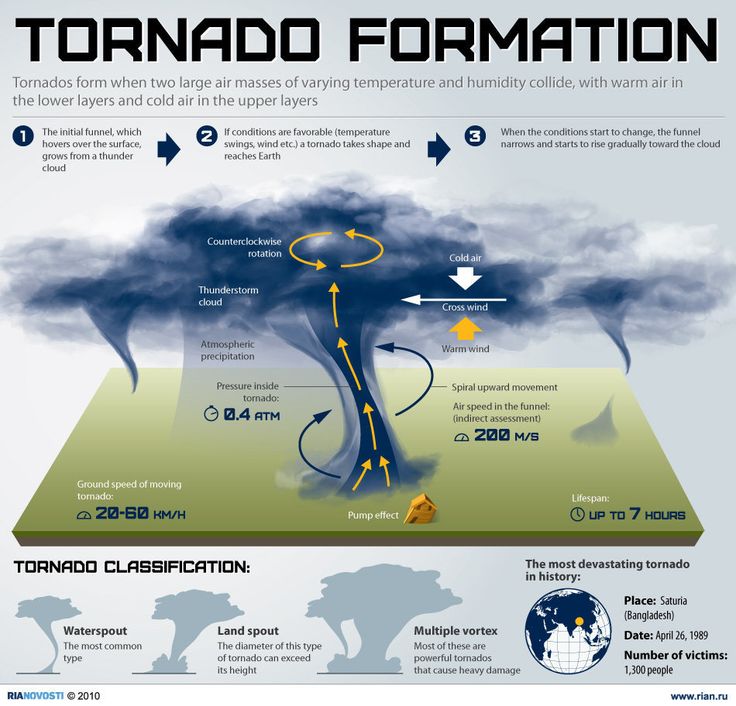 If your vehicle does not have a TPMS light, the low-pressure icon might flash, which could indicate an issue with the system.
If your vehicle does not have a TPMS light, the low-pressure icon might flash, which could indicate an issue with the system.
No matter what causes your tire pressure light to turn on, stop by any Les Schwab. We’ll add air to your tires and check out your system.
Winter temperatures can affect the pressure in your tires by up to 10 PSI. Depending on how cold it is, the TPMS light will likely shut off on its own as the air in your tires warms, expands, and reaches proper inflation levels.
Regardless, get your air checked right away. The TPMS light means your tires are below the proper air pressure. This is a safety risk, especially in the winter as the drop in air pressure can cause compromised handling and increased wear and tear on your tires. Your gas mileage could also be affected.
Driving too long with the TPMS light on (and low air pressure) could affect your safety, including handling and braking. It can also decrease fuel efficiency, damage your tire sidewalls, and cause uneven tread wear. If the TPMS light does not go off after you have added air, get to Les Schwab immediately or change to your spare (if you know which tire is low) and stop by as soon as possible.
It can also decrease fuel efficiency, damage your tire sidewalls, and cause uneven tread wear. If the TPMS light does not go off after you have added air, get to Les Schwab immediately or change to your spare (if you know which tire is low) and stop by as soon as possible.
Maintaining proper air pressure can extend tire life by promoting even tread wear. Plus, correct air pressure can improve fuel efficiency by up to 3.3 percent, adding up to more miles per gallon.
Your TPMS light may flash if your vehicle’s onboard computer can’t detect the sensor, whether it has been damaged or you are using your spare tire. While many vehicle spares do have a sensor, some do not.
During colder months, we recommend you have your tire pressure checked once a month. Throughout warmer months, you might not need to check your tires as frequently. You can check your tire pressure by following the steps below or by watching our video.
You can check your tire pressure by following the steps below or by watching our video.
Learn how to add air to your tires.
Look in your owner’s manual or for a special sticker on the inside driver’s side door for the standard cold tire inflation pressure. This number is the suggested PSI for your tires, as suggested by the vehicle manufacturer.
Please Note: If you suspect a tire or wheel on your vehicle may be damaged, change to a spare and head to Les Schwab. We will inspect it for free.
Verify the pressure in each tire in the morning or when the tires are cold. This will give you an accurate reading. To check the pressure in each tire, use a tire pressure gauge. These often look like a metallic pencil with a sliding measuring device on one end and a tire valve connection on the other.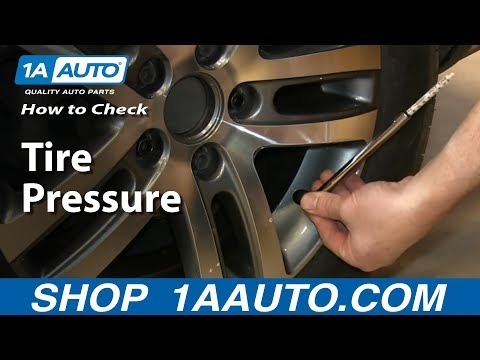
Whether you’re at a gas station or home, be sure you can safely reach all four tires with the air hose.
Put the cap in your pocket so you don’t lose it.
Begin to inflate your tire. You’ll hear air going into the tire. If you hear or feel air coming out, readjust the connection between the air nozzle and the value stem.
Keep in mind that not all air compressors inflate at the same rate. You’ll want to check your tire pressure often as you inflate. Add air as needed. To remove air, quickly push in the center pin located inside the tire valve.
This helps keep more air in your tires for a longer period of time and can keep road debris (dirt and more) from getting into the valve.
If you need help with the air pressure in your tires, find a Les Schwab store near you.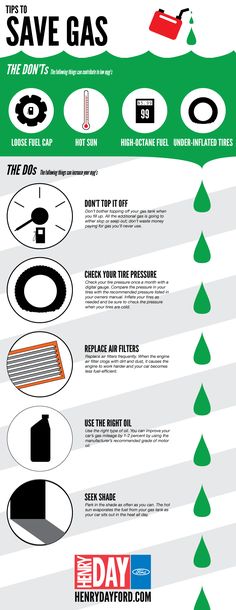 Our knowledgeable technicians will perform a free visual inspection, inflate your tires to the recommended pressure, and get you safely back on the road.
Our knowledgeable technicians will perform a free visual inspection, inflate your tires to the recommended pressure, and get you safely back on the road.
Find a Store
Yes, you typically need to inflate your tires in cold weather. As we'll explain, low temperatures often mean low tire pressure, and low tire pressure could mean dangerous driving conditions.
With the promise of holiday travel up ahead, it’s time to prepare! Firestone Complete Auto Care is here to help you drive safer with a quick lesson on cold weather and tire pressure.
First, a quick science lesson: when the temperature drops, molecules in the air move slower and huddle together. When the temperature increases, molecules move faster and farther away from one another!
You can test this concept for yourself. Just set a basketball outside and wait! The ball will slightly deflate in the cold morning air, then re-inflate in the heat of the afternoon.
When this concept plays out inside your tires, it can affect your tire pressure.
That's because tires lose or gain 1-2 PSI (pounds per square inch) for every 10℉ change in temperature. So theoretically, your tires could lose 4 PSI over the weekend if the temperature drops by 20℉!
While your tire pressure should bounce back after the cold spell passes (assuming it does pass and your tires have no leaks or holes), low tire pressure shouldn't be ignored.
Low tire pressure can lead to:
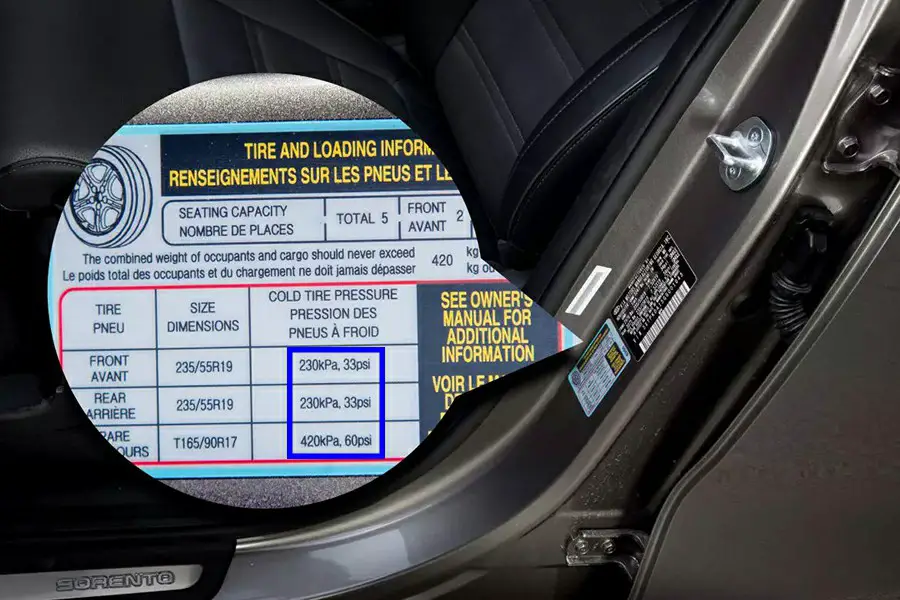
A small decrease in tire pressure is hard for the naked eye to detect, but it can still have a big impact on your driving. Tires can lose pressure even when temperatures remain constant over the winter. To be safe, we recommend checking tire pressure every other time you visit the pump, and especially when your TPMS light pops on.
Here’s how:
You can find it written in your owner’s manual or on a sticker attached to your door jamb, glove box, or fuel hatch. Recommended tire pressure usually falls between 30-35 PSI for passenger cars. If you’re not sure, try our recommended tire pressure tool.
Measure your tire pressure before driving, not after, for the most accurate reading. This practice is referred to as setting the cold tire pressure. If your recommended tire pressure is 32 PSI, that means 32 PSI before you put rubber to the road and the tires heat up.
Tire pressure gauges can be purchased for a few dollars at most big box retailers. "Pencil" style gauges are cheapest and have a little stick that pops out with the tire pressure reading. Digital tire pressure gauges are a bit more expensive but are extremely easy to use.
This is the little black, blue, green or silver screw-cap on your wheel's valve stem. It should be plainly visible from the outside of your car.
Follow the instructions that come with your tire pressure gauge. If there's a hissing sound when you insert the gauge, it may not be properly seated on the valve stem. Re-adjust the angle of the gauge until the hissing stops. What's your tire pressure? Do your tires need to be inflated?
Repeat the process for each tire and note your tire pressure readings.
 Inflate your tires, if needed.
Inflate your tires, if needed.There's a good chance you'll need to inflate your tires in winter at least once. If your tire pressure is low, find your nearest air pump. Add air until you reach your recommended tire pressure, or visit your nearest Firestone Complete Auto Care and we'll inflate your tires for you.
If you need help with any of these steps, please don't hesitate to stop by a local Firestone Complete Auto Care. Summer or winter, sunshine or snow—our knowledgeable technicians will check the health of your tires, inflate them to the recommended pressure, and guide you in buying new tires if yours show an alarming degree of wear.
As repeatedly stated, regular maintenance not only improves mileage, but also increases reliability. Of all the maintenance methods, the most important for us is regular tire pressure checks. The optimum pressure (recommended by the manufacturer) is equal to the optimum return during operation.
Do you know that pressure depends on temperature changes and climatic conditions? Yes, it is - it changes in warm and cold weather. What do we remember from the school physics course? The fact that when heated, the gas expands and increases in volume. And at low temperatures, the gas is compressed. The same process takes place inside your wheels. In countries where the temperature changes significantly throughout the day, it is very important to pay attention to pressure. nine0003
It has been scientifically proven that the internal pressure changes by 3-4% for every 10°C change in temperature. Simply put:
So, that's sorted out. We go further.
Not only the outside air temperature should be taken into account when checking and pumping. There is also the heat generated by the tire itself, which also leads to a change in pressure. nine0003
nine0003
The crux of the matter is... how does this affect performance?
Imagine this situation: your mechanic checks the tires, and the pressure is normal - exactly according to the manufacturer's recommendations. Everything is fine. Then (shortly after the pressure test) the ambient temperature rises significantly (this happens in many parts of the world). Plus, the tires warmed up from work. The combination of these two factors leads to a significant increase in pressure and negatively affects performance. nine0003
Always remember that excessive pressure leads to intense and uneven wear - this is the number one enemy in the operation of the wheels.
The same principle works in the opposite direction: the outside temperature drops sharply (during harsh winters, for example) or when operating on snow or ice. The clutch drops, maneuverability and grip deteriorate, the carcass deteriorates, and fuel consumption increases.
Is there a way to control the situation and how to prevent pressure surges? We strongly recommend that you carefully follow the manufacturer's recommendations. Remember that the nominal pressure must be checked in the morning - when the vehicle has not yet been used and the tires have not warmed up. nine0003
Remember that the nominal pressure must be checked in the morning - when the vehicle has not yet been used and the tires have not warmed up. nine0003
But if suddenly the outside temperature changes significantly (hard frost or heat), you should deviate slightly from the recommended pressure - in order to avoid potential problems. But try to do it yourself. Always check with a tire specialist beforehand. He will take into account the features of the vehicle, operating mode, temperature and climate, and only then will he give a recommendation for “fine tuning” of the pressure. Remember, if you have any questions about tire pressure, don't hesitate to ask a tire specialist for advice. nine0003
BKT Information
Details on the pressure in the tires of a bicycle are described in a separate article on our website: “Bicycle tire pressure”.
Here we will discuss only one nuance: the effect of temperature on the pressure in the inflated wheel .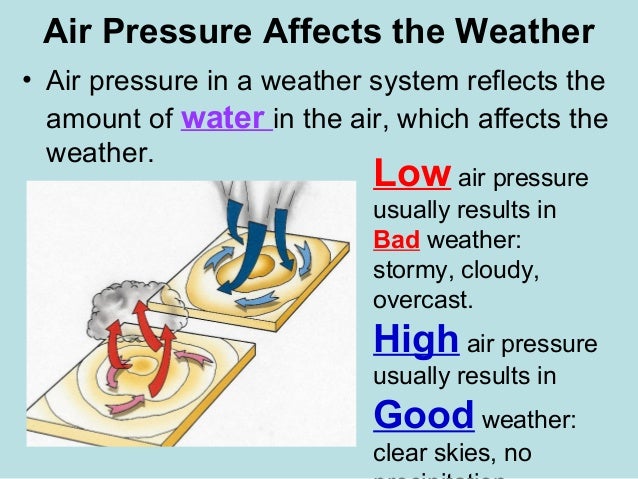 Moreover, this influence has the same nature and consequences for any tires - bicycle, moped, motorcycle and automobile. nine0003
Moreover, this influence has the same nature and consequences for any tires - bicycle, moped, motorcycle and automobile. nine0003
First of all, on the ambient air temperature where the bicycle (motorcycle, car) is located when parked. Those. if the wheels are inflated to a pressure of 2.5 atmospheres at home or in a garage, where the temperature is 20 ° C, and then the bike (motorcycle, car) goes outside, where the temperature is +30 ° C, then the pressure in the tire rises a little.
Next. The wheels begin to roll on hot asphalt and, accordingly, heat up from contact with the asphalt itself and from the resulting friction force of the rubber on the asphalt. As a result, the pressure rises again. Of course, on a bicycle, frictional heating is very, very small and only concerns big racing professionals, but with a large temperature difference - in extreme heat or cold, this already becomes noticeable. This factor (heating from the friction of rubber on asphalt) is much more important for motorists and motorcyclists - the speed there is much greater than on a bicycle and, accordingly, the friction force is the same. nine0003
nine0003
It cannot be said that this issue is critically important, but it must be taken into account, and this is especially noticeable with significant differences: more than 15-20 degrees.
For example, if a bicycle is stored in a warm apartment or a heated garage in winter at a temperature of +20 - +25 °С, and you ride in winter at -10 °С, then the difference is 30-35 degrees. A bicycle rides on snow, snow crust or ice, cold frozen asphalt, whose temperature is also not +20, and as a result, the pressure in the wheel decreases by about 0.3 bar. And this is already significant. nine0003
We will not go deep into the physics of the process.
This explains Charles's law (Gay-Lussac's second law), which you can read about in physics textbooks or on Wikipedia.
Let's give its main idea and calculation formula.
Charles' Law states that "The pressure of a gas of fixed mass and fixed volume is directly proportional to the absolute temperature of the gas.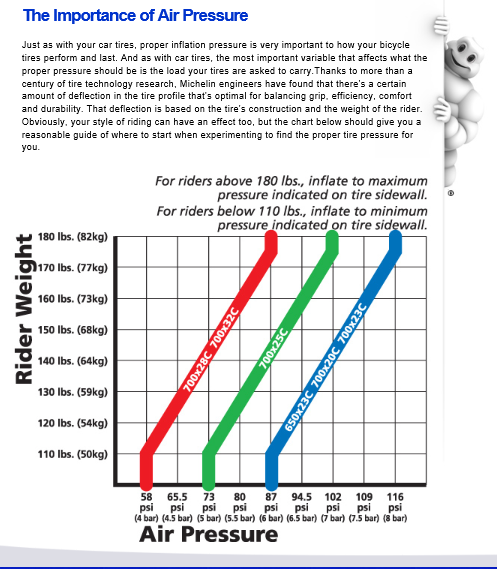 " In an inflated wheel, there is just gas (air) of a fixed mass and volume, and the higher the temperature, the higher the pressure. In winter, in the cold in the wheels, it decreases, and in the summer in the sun it increases. nine0003
" In an inflated wheel, there is just gas (air) of a fixed mass and volume, and the higher the temperature, the higher the pressure. In winter, in the cold in the wheels, it decreases, and in the summer in the sun it increases. nine0003
The formula for calculating tire pressure depending on air temperature is as follows:
pressure at 25°C use this formula and get:
"Pressure at 0°C" * (273 + 25) / 273
or
2.5 * (273+25) / 273 = 2.73 ≈ 2.7 bar
Recall again that: 273 is the temperature in degrees Kelvin, not degrees Celsius. nine0003
To make life easier, here is a table of changes in pressure in the wheel, inflated at 0°C, depending on the air temperature.
If you measured the pressure at +20°C and want to understand what it will be like outside in winter at a temperature of -15°C, then the formula will take the form:
2.5 * (273 + -15) / (273 + 20) \u003d 2.5 * 258 / 293 \u003d 2.2 bar
In general, if you calculate very roughly and approximately, then we can say that at a pressure of more than 2 bar every 8-10°C change in temperature results in a pressure change of about 0.